How Doth the Little Crocodile...
⬅ previous ⬆intro next ➡Day 6 ~ January 25 ~ Luxor and the Nile
Up at a most ungodly hour: sunrise is around 6am at this time of year and it'll take us a little while to get to Karnak.
When we arrive, the sky is starting to lighten, but the temple is still floodlit.

Because of the distant hills, the sun isn't visible until a little after the notional sunrise time.
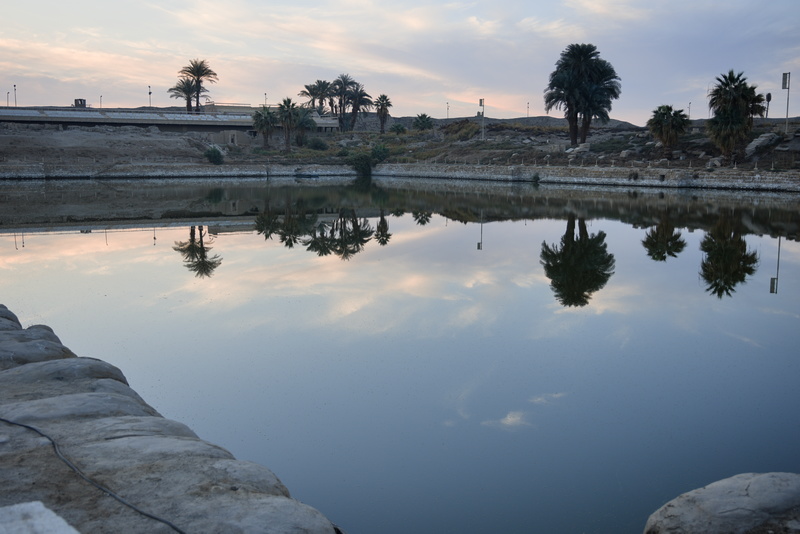
The sacred lake.
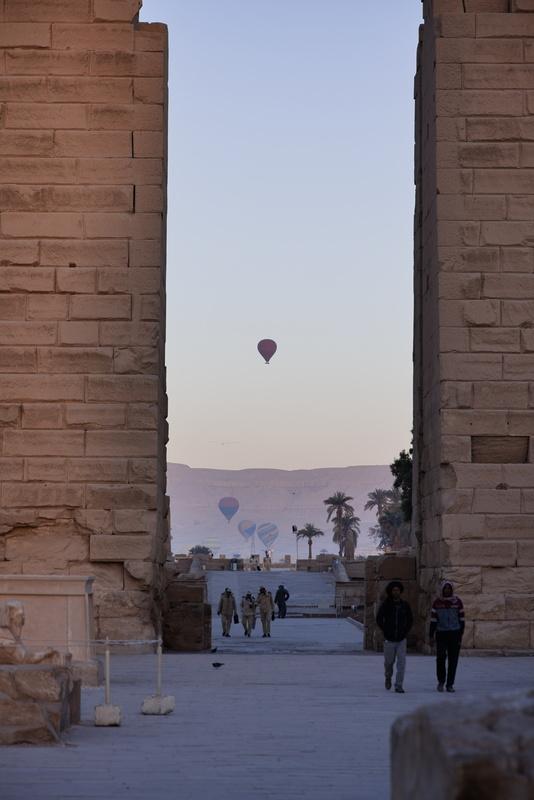
A few more people are arriving now, and we see more hot air balloons taking off.

This was once a hypostyle hall with a central colonnade higher than the surrounding areas allowing windows in the upper walls to admit light. The roof beams are all gone now.

There are some wooden walkways above the pillars (not accessible to us) which we're told were built for filming "Death on the Nile". (The 1978 film, that is. It and the 2004 TV episode of 'Poirot' used Karnak as a real location, but the 2022 Kenneth Brannagh movie was all CGI and models built in Britain!)
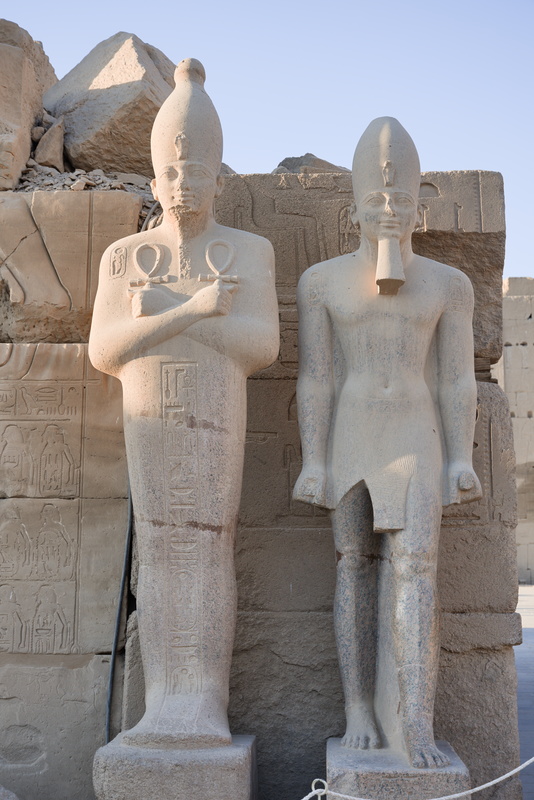
Hmm... I have forgotten who these statues represent, and to my great surprise, when I do an image search I just find pictures captioned "Statues at Karnak" or "Statues of Pharoahs". This is not entirely satisfactory, but I suppose there are greater problems in the world today.
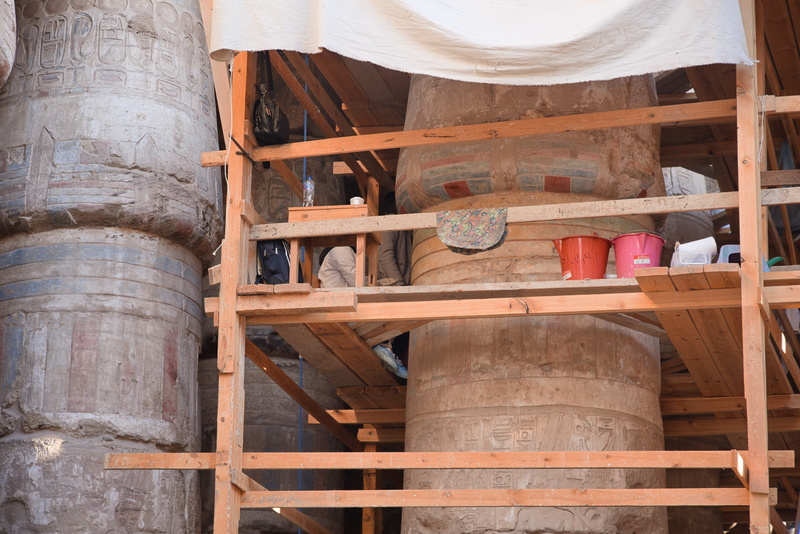
Restoration work is still going on.

At this end of the Avenue of Sphinxes, the sphinxes have ram's heads.
Our Nile cruise is going to be starting from a town called Esna, an hour or so's drive away, and we'll take a walk around it first.
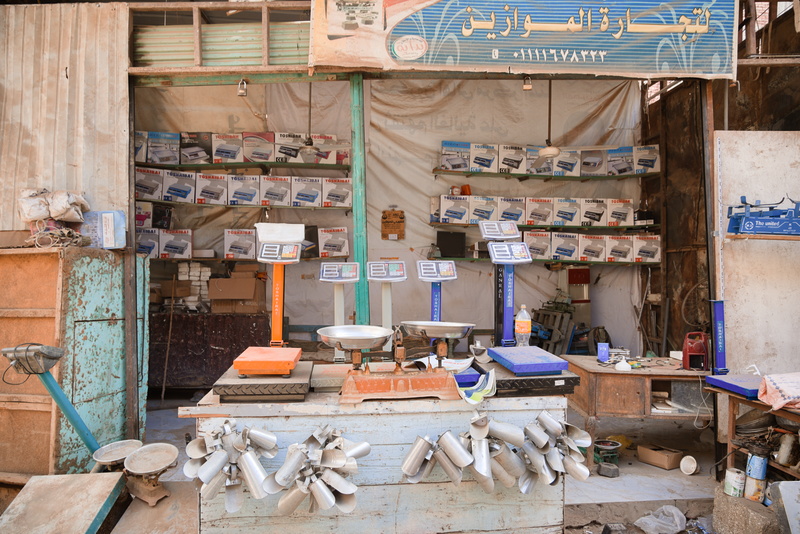
A shop dedicated to the sale of weighing machines and various kinds of scoops, measuring cups, etc.

Once a grand family house belonging to a rich merchant. The estate agents would probably say it has "potential" and there are plans to restore it when funds permit.

Local kids want me to take their picture.
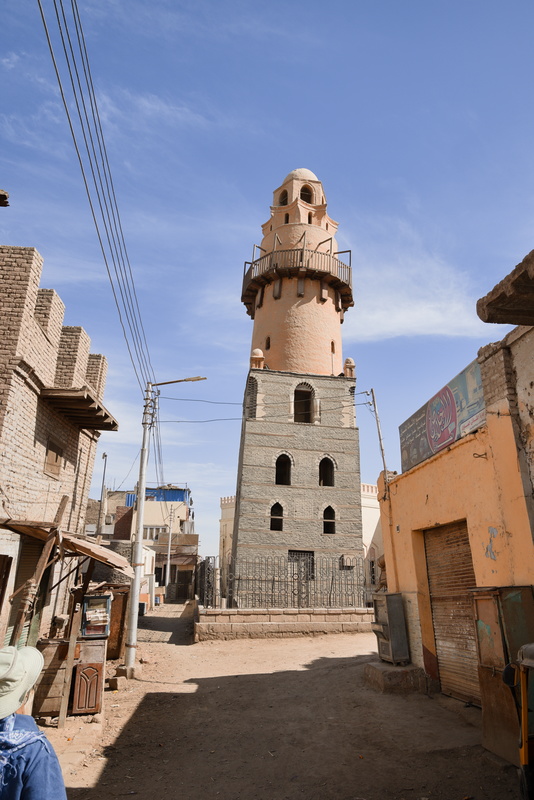
The Leaning Minaret of Esna. Built in 1082 AD, it's one of the oldest in Egypt.
So to a small agricultural museum.
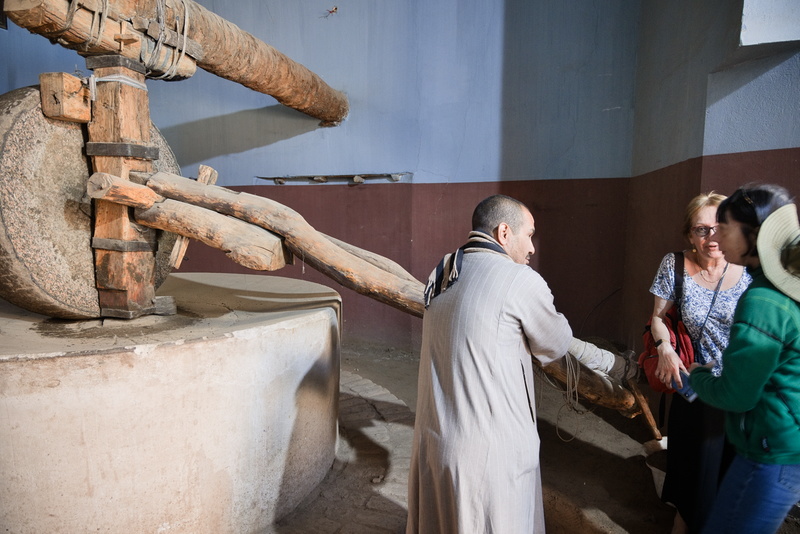
This is a lettuce seed press for extracting the oil. Now you, like us, had probably never thought of lettuce as an oil crop, and at first we thought we were mishearing, but indeed it is so. In fact, its use for oil seems to precede it being a salad leaf. I have found a fascinating PhD thesis with the most wonderful title:
THE LETTUCE CONNECTION
A re-examination of the association of the Egyptian god
Min with the lettuce plant from the Predynastic to the
Ptolemaic Period.
It tells us such useful things as, "The Egyptian oilseed lettuce L. Serriola var. oleifera is ‘...a primitive, wild-looking plant...’ that does not grow from a rosette of leaves or form a head"
And, "It is known that lettuce was grown for cooking oil in Upper Egypt in the early twentieth century and an oil press is known to have been processing lettuce seed in Esna in 1967". This may even be that one! As a proper thesis, it does give source references but I have sadly no access to the article by Knowles: "Processing Seeds for Oil in Towns and Villages of Turkey, India and Egypt." published in 1967 in the journal Economic Botany 21.
But do read it yourselves: The Lettuce Connection.

This one is a more conventional olive press.

Amanda and Sophie have a grinding race!
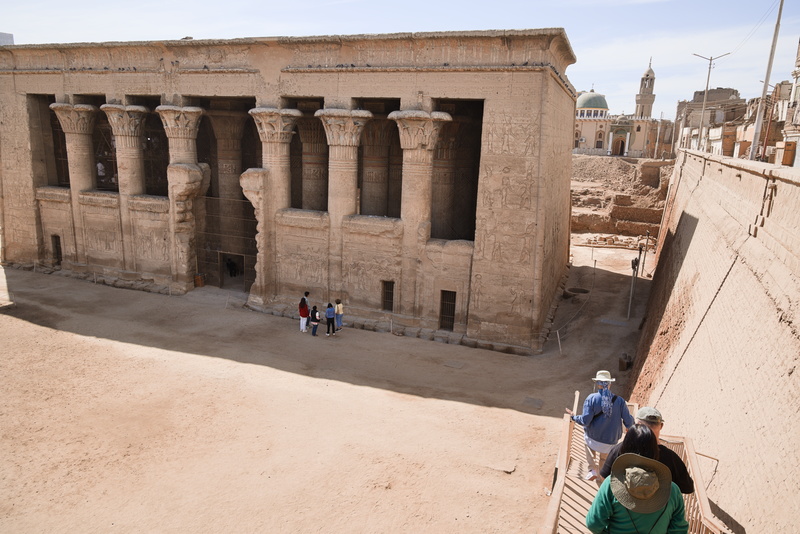
The temple of Khnum. As you can see, ground level was a lot lower when it was built! The temple was pretty much buried until excavations began in the 19th Century.
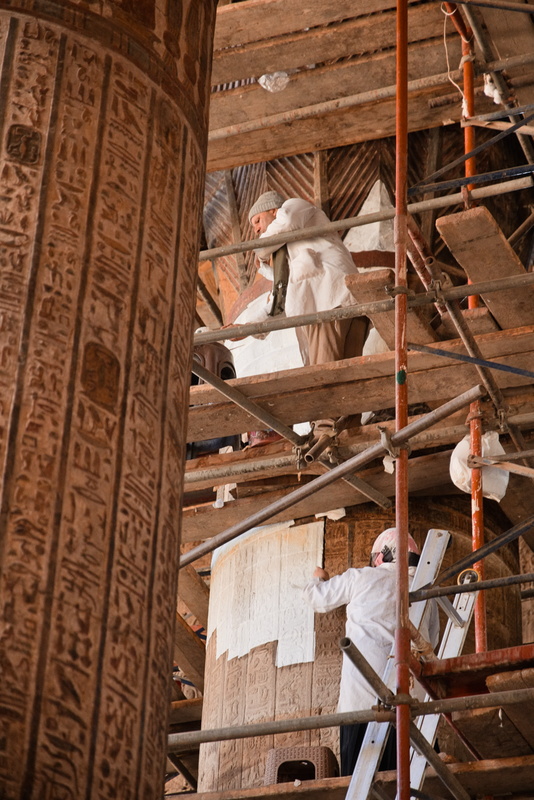
More restoration work. The white paper sheets are wetted and placed on the stonework; when they dry and are peeled off, they take the surface dirt with them. Ironically, it's that accumulated layer of soot and dirt that has preserved the colours underneath.
The project only began in 2018, so we're among the first people to see some of these things.
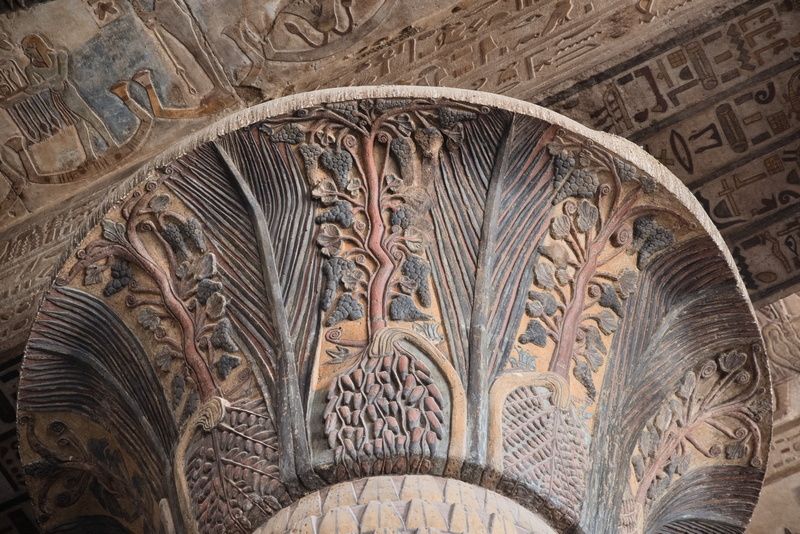
A typical column capital after restoration. The project is a cooperation between the Egyptian Ministry of Tourism and Antiquities and the University of Tübingen in Germany. You can read about it on the University website which also has some rather impressive before-and-after photos.
Ok, boat time...

Our 'Dahabiya' as these boats are called, is the one on the outside, so we'll have to walk the plank and then leap from boat to boat in true pirate fashion.
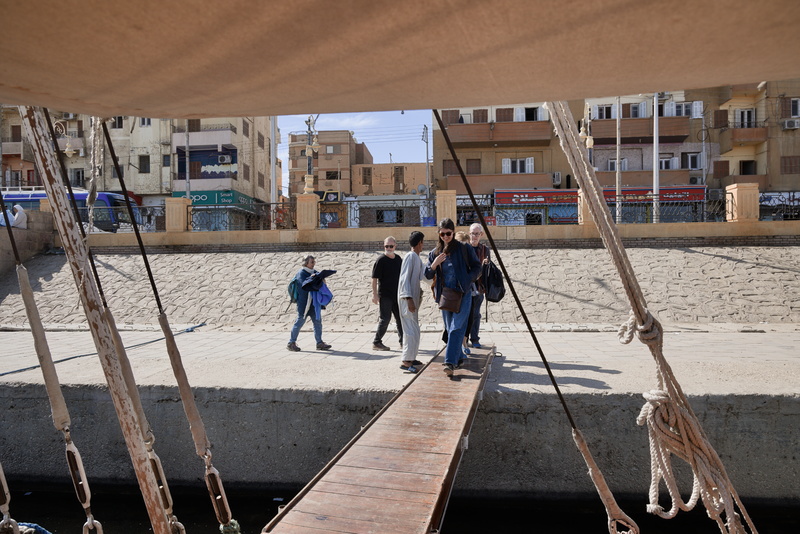
Ok, maybe I was overdramatising a little.
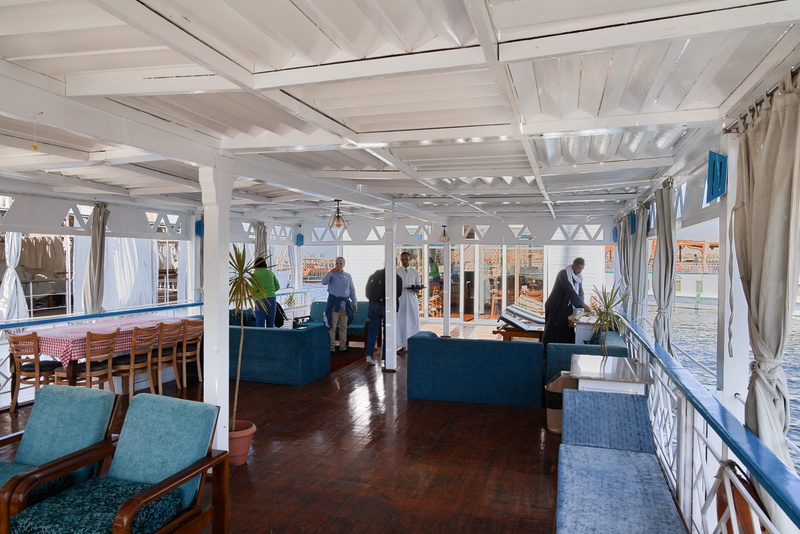
And here we are on the Royal Cleopatra's main deck.

The dining area.

And our cabin, at the rear of the boat (sorry, "stern"!) with big windows to look out of.

There's a shortage of wind, so we are being towed by a motor tug. The rope is long enough that the engine noise is not intrusive.
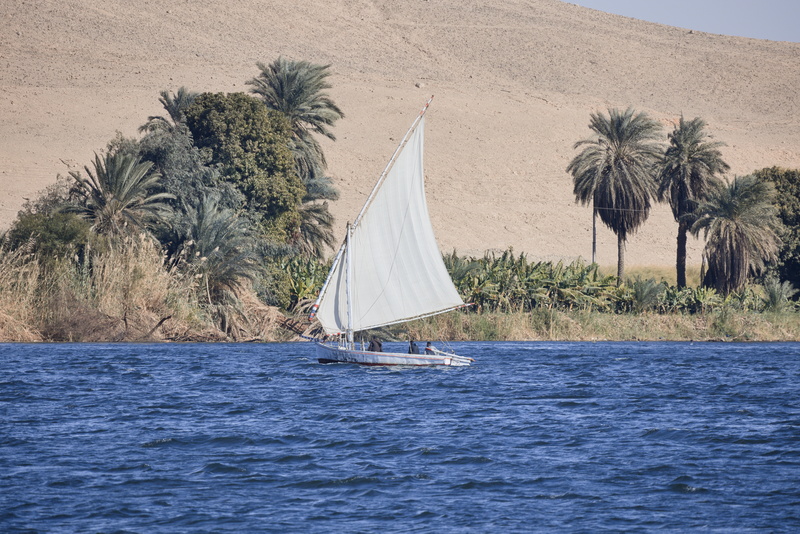
This boat is barely moving under wind-power alone.
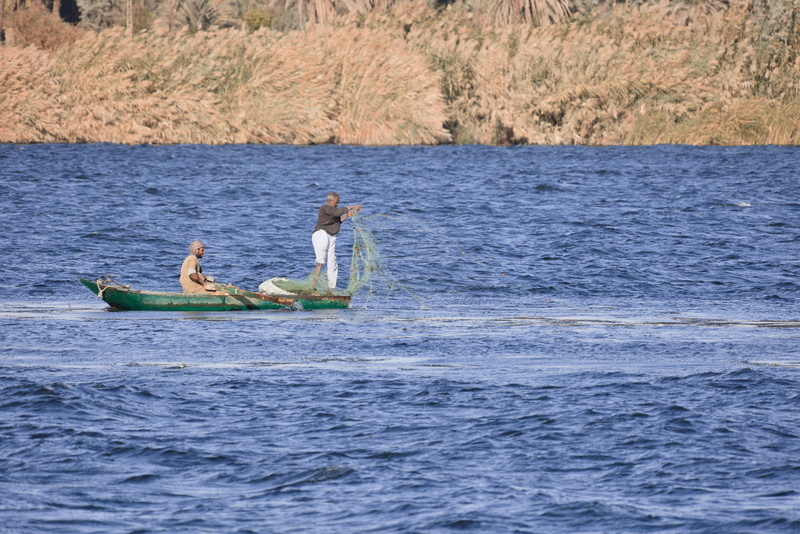
Local fishermen.
We cruise until late afternoon, when we go ashore to visit a small island village.

El Hegz Island.
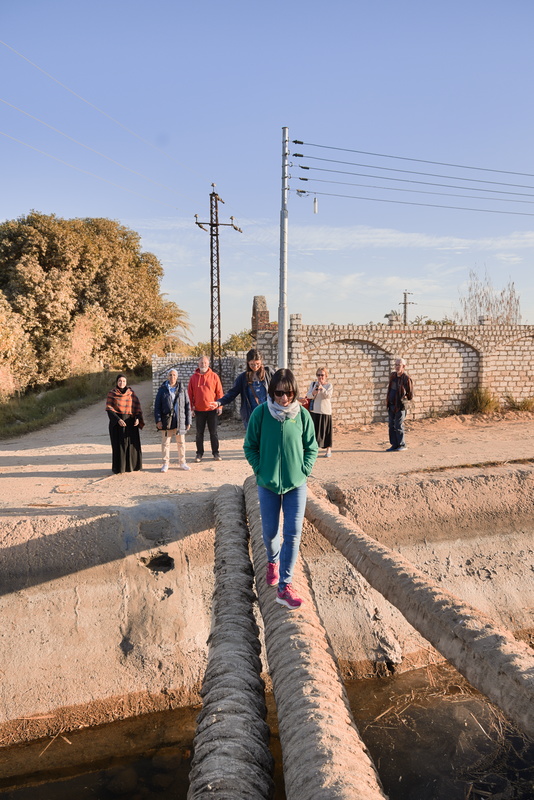
This 'bridge' is an optional extra on our walk. Amanda and Sophie are following me (yes, of course I went first, what would you expect?) and then Rob decides that he can't wimp out and joins us. The rest decide that falling off the log would probably be as easy as falling off a log and decline.
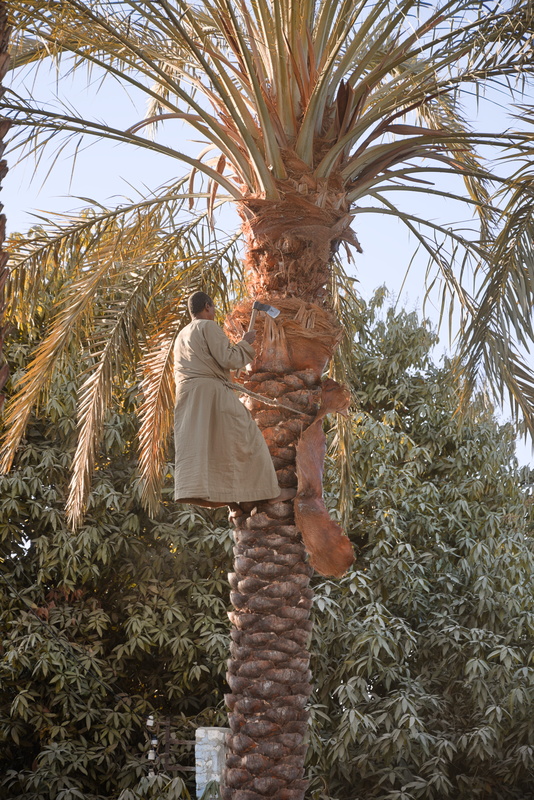
Cutting dead leaves off the palm tree.

Examining embroidery samplers that some of the local women make.
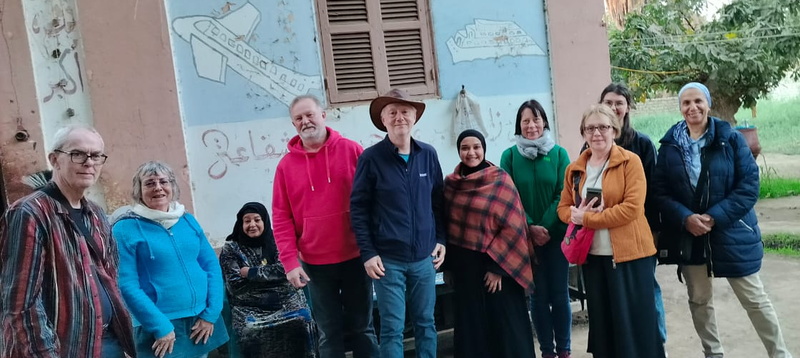
And finally, a picture of the whole motley crew.
Left to right: Duncan, Lynda, [local guide's mum?], Rob, Steve, [local guide], Amanda, Janet, Sophie and Rawya.
Oh, the aeroplane painted on the wall commemorates one of the family members going on the Haj - the pilgrimmage to Mecca.

We finish the day with sunset over the Nile. Goodnight.
⬅ previous ⬆intro next ➡